Time to Register for the #SHA2016 Conference!
Hello SHA members!
Registration for #SHA2016 has begun! Please follow this link (https://sha.org/conferences/) to access the registration site. In addition, the #SHA2016 conference program is posted; follow this link to take a look (https://www.conftool.com/sha2016/sessions.php).
As you are registering for #SHA2016, the conference has reserved a limited number of rooms at the conference venue, the Omni Shoreham. Located in NW D.C., the hotel overlooks Rock Creek National Park, which also happens to be celebrating its 125th Anniversary! The Omni Shoreham is just a quick five minute walk to the Woodley Park-Zoo Metro stop, which is location on the Red line. The Red line will take you straight into the heart of downtown D.C. In addition, Just north up Connecticut Avenue is the National Zoo, which is open daily, from 7 am to 8 pm. 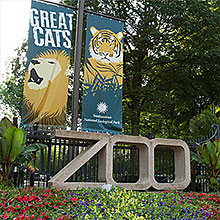

The Omni Shoreham is in a great location to take advantage of what D.C. has to offer, so make sure to reserve your hotel room when registering for the conference. Follow this link (https://sha.org/conferences/)) to do so.
Your Chance to Weigh In! NPS Revising U.S. World Heritage Tentative List
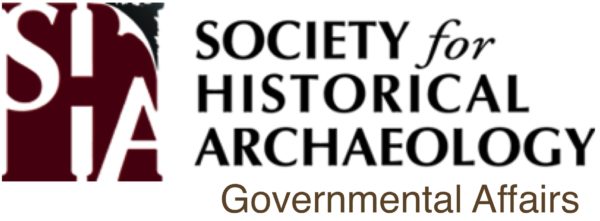 For the first time in almost ten years, the National Park Service (NPS) is revising the Tentative List of nominees to the World Heritage List. Inclusion on the Tentative List is a necessary prerequisite to being nominated by the United States to the World Heritage List. NPS has asked US/ICOMOS to structure an Expert Consultation for the revisions to identify and prioritize themes in U.S. cultural resources that fill gaps identified in the World Heritage List. US/ICOMOS seeks inter-disciplinary input to insure inclusion of a wide variety of themes, such as the “archaeological sites or landscapes of global significance” theme. If you would like to participate, please register and respond to the survey here. You can join one or more moderated professional discussions, and follow the on-line discourse.
For the first time in almost ten years, the National Park Service (NPS) is revising the Tentative List of nominees to the World Heritage List. Inclusion on the Tentative List is a necessary prerequisite to being nominated by the United States to the World Heritage List. NPS has asked US/ICOMOS to structure an Expert Consultation for the revisions to identify and prioritize themes in U.S. cultural resources that fill gaps identified in the World Heritage List. US/ICOMOS seeks inter-disciplinary input to insure inclusion of a wide variety of themes, such as the “archaeological sites or landscapes of global significance” theme. If you would like to participate, please register and respond to the survey here. You can join one or more moderated professional discussions, and follow the on-line discourse.
Management Challenges, Public Relations, and Professional Issues
This week we bring you another video recorded session from the 2015 SHA conference. This was a general session so the topics will be diverses. If you are interested in seeing more great archaeology presentations be sure to book your tickets to this year’s SHA conference in Washington DC.
The presentations:
Urban Archaeology in the City of the Saints and the Growth of a Real Frontier City
Donald D. Southworth II
While archaeologist in the western United States survey wide open expanses for federal and state agencies, archaeology in the urban centers themselves are often ignored. The majority of city centers consist mostly of businesses and business is money. Archaeology in these districts cost time and money, so archaeology is almost never undertaken unless it is done for an agency that must follow established laws and regulations that include archaeology. The new United States Courthouse for the District of Utah in Salt Lake City, Utah, presented just such an opportunity to conduct urban archaeology. The results of these excavations have highlighted contrasting interpretations of the accepted narrative history of the city, and the life style of its inhabitants. This paper presents some of the evidence for a reinterpretation.
Present in the Past: Environmental Archaeology and Public Policy
James G. Gibb
Eroding farmland, diminishing forest stocks, sediments choking navigable waterways….these are environmental changes wrought, at least in part, by human decisions and human actions. In the present, these are highly politicized issues, providing thin veils to debates about ideology. Exploring environmental changes in the distant past creates a safe place in which dialogue participants have little or no vested interest and ideology a less prominent role. Public dissemination of archaeological research into historic changes in the lands and waters of Southern Maryland, USA, specifically dealing with erosion and sedimentation, have a direct bearing on the current statewide “rain tax” debate. Research at the Port Tobacco townsite and the Sellman’s Connection plantation contribute to a scientific basis for public policy without direct reference to the politics of imposing a new tax to fund solutions to a centuries-old problem.
Digital Archaeological Data: An Examination Of Different Publishing Models
Mark Freeman
The open data movement, inter-site analysis, and the desire for public outreach are encouraging archaeologists to share data, as well as results. Yet the history of archaeological collections provides concerns about access and preservation that extend to managing digital assets. This paper will examine the availability of digital archaeological data in Virginia, based on a recent survey, and examine the strengths and weaknesses of different models of archaeological data publication.
Finding Successful Solutions for Environmental, Engineering, Cultural Resources, and Public Relations Challenges at the Presidio of San Francisco, California
Sean E McMurry
In 2012-2014, AMEC successfully balanced the needs of the National Park Service (NPS), the Presidio Trust, and regulators to preserve historic resources, maintain public relations, engineer safe and effective solutions, and address environmental concerns during remediation activities to remove contaminated soil at the Presidio of San Francisco, a NHLD and NRHP-listed property. For over 150 years, the Presidio, located near the Golden Gate Bridge, was used by the U.S. Army to protect San Francisco. Remedial activities removed approximately 14,800 cubic yards of contaminated soil. Working with NPS staff, AMEC archaeologists developed an archaeological monitoring, sampling, and excavation strategy that preserved archaeological resources while keeping the project on schedule and budget. The 32 features recovered included a buried 1870s ammunition magazine and large, intact 1870s and 1890s coastal defense battery features. This presentation discusses the challenges of working in an archaeological landscape and the innovative techniques used during remedial excavations.
Overwhelmed with Possibilities: A Model for Urban Heritage Tourism Development
Tristan J. Harrenstein
The city of Pensacola, FL has been attempting to create a heritage tourism industry for half a century but has never achieved the same level of success of some of the most notable destinations they were trying to emulate. This is, in part, due to a significant level of development in the historic district, much of which is now historic as well, combined with an impressively complex history concentrated in a relatively small area. If Pensacola, and any community in a similar situation, is to develop an effective heritage tourism program then a well organized plan is required. This paper presents a model for the development of an interpretive program which aims to provide the best possible results for the community, the tourist, and the archaeological resources.
The Best Kept Secrets in Archaeology: The numbers no one knows, but everyone talks about.
Doug Rocks-Macqueen
How many professional archaeologists are there? How much do they make? How many women are archaeologists? Where do they work? It has been 20 years since the data to answer these questions was gathered through a survey and published in the report The American Archaeologist: A Profile by Melinda A. Zeder. However, there has yet to be a follow up project. Our only profile of professional archaeologists is arguably out of date, significantly. This paper uses a variety of different data sources to build up a profile of current American archaeologists and what has happened in the intervening years. While it is not possible to replace such a large scale survey as the one undertaken 20 years ago, this paper will layout what we know, a current profile, and our gaps in knowledge.
New Articles from Technical Briefs in Historical Archaeology
Technical Briefs in Historical Archaeology has recently published several exciting and useful articles. Three are artifact studies, including a discussion of the origins of French faience based on stylistic and compositional data (Métreau and Rosen), an analysis of bottle contents with some surprising results (von Wandruszka et al.), and a case study of utilized glass analysis (Porter). At a larger scale, Thomas and Volanski offer a geochemical method of for identifying laundry washing sites. Three additional authors discuss innovative photography applications. Rivera’s article provides a primer on applying forensic photography techniques to archaeology collections. A two part article by Whitely introduces the use of drones in archaeology and methods for collecting video footage for site mapping. Finally, an article by Selden presents the uses of photogrammetry in grave marker recording.
Please also consider submitting an article to Technical Briefs. Technical Briefs is a peer-reviewed publication devoted to the fast dissemination of shorter specialized technical papers in historical archaeology, maritime archaeology, material culture technology, and materials conservation. Technical Briefs articles reach and international audience through the SHA webpage and provide free, open access to your ideas. At 3,000 words and with an average of four months from submission to publication, Technical Briefs also offers a relatively painless way to publish. Submission guidelines are available on the Technical Briefs webpage and inquiries can be sent to Ben Ford.
Cover image is an aerial view of Waddington Roadhouse, oblique angle. (Photo by Thomas G. Whitley, 2015.)
Autumn is here! #SHA2016 registration is near….
Good afternoon SHA members!
Autumn is here, and registration for #SHA2016 begins next week! Be sure to mark your calendars for next Thursday, October 1. For general #SHA2016 conference details, please follow this link.
In addition, the #SHA2016 conference program is now posted! Please follow this link, to take a look. Please note that Symposium organizers may notice the names associated with the Introduction, Discussants and breaks in their session are not correct. These names will be updated in the program once the individuals who will be performing these roles register for the #SHA2016 Conference. Only individuals who are registered in ConfTool can be added to the program; it was necessary, therefore, to create “placeholders” to ensure that the timing for each session is correct.
Otherwise, as we get closer to #SHA2016, our blog posts will focus on conference related details as well as Washington, D.C. related information. Before we begin our next round of blog posts, however, we would like to hear from you. Is there anything specific you would like us to blog about, leading up to the conference? Is there anything you wished you knew beforehand, about previous conferences?
Please comment below this blog post with any thoughts- we’d love to hear from you.
Don’t forget to register for #SHA2016, next Thursday, October 1!
Five Tips for Managing Your Time in Graduate School
New thematic issue of Historical Archaeology: Contemporary and Historical Archaeology of the North
The new issue of Historical Archaeology, 2015, Vol. 49, No. 3 is soon to be hot off the press. In this issue, guest editors, Jeff Oliver and Neil Curtis (University of Aberdeen), have assembled papers originally presented at the 2010 Contemporary and Historical Archaeology and Theory conference in Aberdeen (CHAT ‘north’), which brought scholars from both sides of the Atlantic to discuss and debate northern worlds in contemporary and historical Archaeology. Northern worlds have always suffered from stereotyping. Since the Enlightenment, north played the role of frontier of geographic knowledge and wilderness of harrowing and sublime proportions. The last century saw its diversification as a space of untapped resources, from fur and gold to oil and gas. In other historical moments, north figured large as a relational concept in the formulation of identities and mentalities, especially by those farther south. The papers in this special issue of Historical Archaeology move beyond the concept of the global north as a space on the map and instead consider how the ‘placing’ of the north and its diverse cultural geographies has been shaped historically through connections with others, notably through relations of exploration, mercantilism, colonialism, and capitalism.
This thematic issue of Historical Archaeology showcases the research of scholars from Europe and North America. It includes eight substantive papers, beginning with an essay contextualizing the creation of the Northern World followed by seven case studies examining on the contemporary and historical archaeology of Alaska, Iceland, Newfoundland, Northern Ireland, Orkney and Scandinavia. An introduction to the volume by Oliver and Curtis is freely available to download here: 1 HA49-3-OLIVER.
Here’s the complete list of articles:
- Contemporary and Historical Archaeology of the North: An Introduction, by Jeff Oliver and Neil Curtis
- Placing North, by Jeff Oliver and Neil Curtis
- I Wish I was where I was when I was wishing I was here: Mentalities and Materialities in Contemporary and Historical Iceland, by Oscar Aldred
- The Changing Lives of Women’s Knives: Ulus, Travel and Transformation, by Emily Button Kambic
- Confronting Marginality in the North Atlantic: Archaeological and Historical Perspectives from the French Colony of Plaisance, Newfoundland, by Amanda Crompton
- Time, Seasonality and Trade: Swedish/Finnish-Sami Interactions in Early Modern Lapland, by James Symonds, Timo Ylimaunu, Anna-Kaisa Salmi, Risto Nurmi, Titta Kallio-Seppa, Tiina Kuokkanen, Markku Kuorilehto, Annemari Tranberg
- North/South Encounters at Sami Sacred Sites in Northern Finland, by Tiina Aikas and Anna-Kaisa Salmi
- Memorials and Marching: Archaeological Insights into Segregation in Contemporary Northern Ireland, by Laura McAtackney
- Northern Worldviews in Post-Medieval Orkney: Towards a More Holistic Approach to Later Landscapes, by Dan Lee
The West as an Edge: The SHA 2015 Plenary
At the 2015 SHA conference in Seattle, myself and the organising committee tried an experiment in video recording some of the panels and presentations. The goal is to share some of the remarkable research and thoughts that were presented at the conference with everyone who could not attend. Or maybe did attend but could not see every session/roundtable/presentation you wanted to because of conflicting schedules. Over the coming weeks we will be posting the videos and discussion about many of the exciting topics filmed, from how to publish as a student to work/life issues in professional archaeology.
The first set of videos we would like to share with you are those from the plenary. The topic of the SHA 2015 Conference on Historical and Underwater Archaeology plenary was ‘The West as an Edge: Defining and Exploring Current Approaches in Archaeology’. This explored the conference theme—boundary and periphery—and took the idea of “the west” in its myriad forms as its secondary theme. We hope you enjoy watching them discuss the topic as much as we did.
Symposium Chair: Carolyn White (University of Nevada, Reno)
Panelists: Chelsea Rose (Southern Oregon University)
James Delgado (National Oceanic and Atmospheric Administration)
Kelly Dixon (University of Montana)
Laurie Wilkie (University of California, Berkeley)
Margie Purser (Sonoma State University)
The Q & A.
If you like these videos be sure to check out this years conference, which is sure to be amazing. If you are interested in more conference videos be sure to check out Recording Archaeology and subscribe there to receive updates when more videos become available.
What to do when there’s no to do: The search for public dig alternatives
Developing new avenues of public archaeology is not always easy. Last year I highlighted my difficulties trying to connect a temporary or transplanted population to the archaeology of southwest Florida. By (tourist) season, I’ve made headway through persistence. Thanks to some amazing partnerships with regional museums, public library systems, and National and Florida State Parks, Florida Public Archaeology Network (FPAN) and I have been able to reach a growing variety of people through lectures, children’s programming, tours, and heritage events. It’s supremely satisfying to chat with attendees who, even after 20 or more winters spent in the area, “didn’t even know ___.”
However, my elation grinds to a halt when they pose their inevitable follow up question: “Where can I help at a dig?” I am forced to admit that there aren’t any. We aren’t so lucky down here as wonderful St. Augustine where visitors might “stumble upon” an active, professional dig site. In fact, the number of field projects that have happened in my region’s five southwest Florida counties in the last four years couldn’t even fill up one hand. There are no regularly accessible labs either. A visitor might have to drive two or more hours to find a lab to visit or help out. How do I connect the people who’ve seen the lecture, read the panel, taken the tour, or visited the museum with an active, responsible way to do fieldwork nearby when no such opportunities exist locally? Fortunately, I don’t have to reinvent the wheel. FPAN already has two popular workshops that empower the engaged public with vital aspects of archaeological work that require no excavation or artifact removal.
The Cemetery Resource Protection Training (CRPT) workshop, recently awarded the Florida Trust for Historic Preservation’s 2015 Outstanding Achievement in the Field of Preservation Education/Media, teaches participants how to manage, maintain, and record human burials and historic cemeteries. The Submerged Sites Education and Archaeological Stewardship (SSEAS) workshop teaches sport divers about submerged resources and how to monitor and record them scientifically. In both cases attendees are furthered charged with the task with going out into the world and recording and reporting additional cemetery or submerged resources to the Florida Master Site File (FMSF). Using these successful workshops as models might be my ticket to investing the more eager members of the public to our local resources and the field of archaeology in new and unexpected ways.
I think involving the public in the discourse of archaeology through a direct connection to the resources in the places they have been found is key. Public interest and hands-on participation create a bond that can lead to steps professionals don’t always get to: extensive advocacy, fundraising, the creation of watchdog groups, and lobbying. Plus, I’m not entirely sure the uninitiated public would be prepared for the difficulties of excavation under the hot south Florida sun anyway.
I am in the process of developing such a new workshop, but I need your help! So far, I’d like to discuss archaeological resource types and processes and highlight the laws that govern them. I’d like to teach participants basic pedestrian survey-style techniques as a way of identifying sites and recording archaeological remains for the FMSF. That way, under the supervision of archaeologists or resource managers, participants can help with the vital work of monitoring known (and sometimes infrequently visited) sites or add to/update the general knowledge of Florida’s resources without having to touch a shovel. Ideally, educated volunteers keeping a constant wary eye out for our resources by may relieve overtaxed resource managers of some of their burdens. I’d also like to include specific “modules” geared towards special interest groups. One idea is to perhaps model a lesson after the cautiously and eloquently designed Archaeological Partnership Program intended to educate avocational metal detectorists. My goal test audience will be park or museum volunteers- those already operating under the supervision of senior staff –and the first workshop will occur late this fall.
As is a concern with all training workshops, I do not want this to become “How to Pot Hunt 101.” Do you think I’m on the right track for my no-digs predicament? What other hands-on, no-dig/ no-lab ways have you done active archaeology with the public? Do you have any suggestions for additional modules? Let me know! If not, you’ll likely hear how I fared on my own next January in D.C.





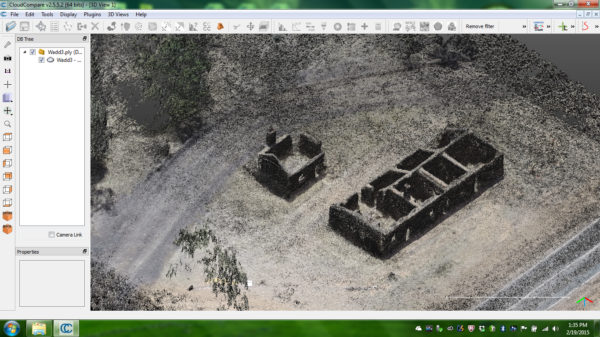

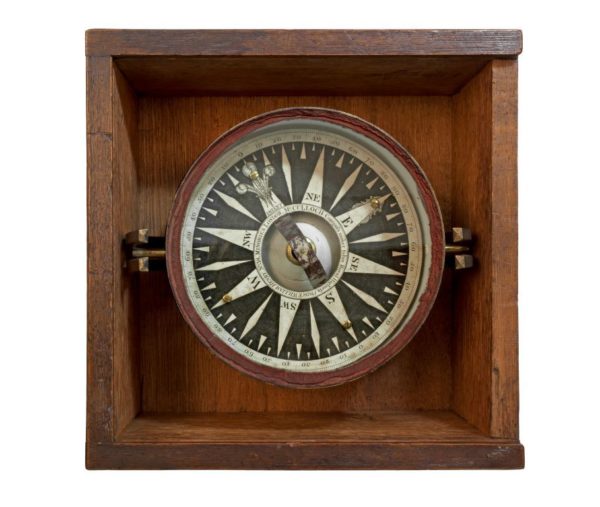
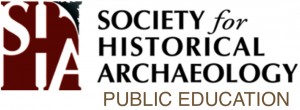


Pingback: WAC May 2012 eNewsletter – Volume 40 – World Archaeology Congress